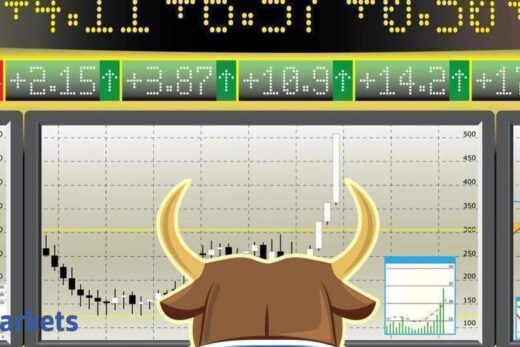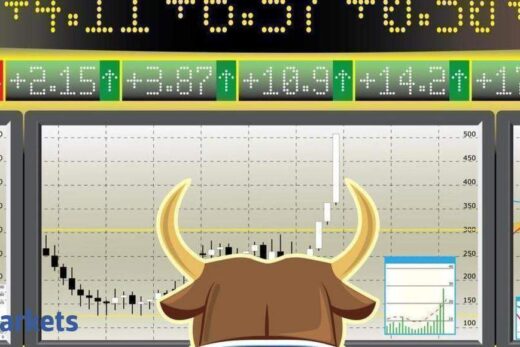There is, however, another metric — perhaps one that is a purer indicator of where markets expect interest rates to head — the overnight indexed swap (OIS) curve. And if one goes by the OIS curve, traders are pricing in quite a bit of monetary policy tightening over the near-to-medium term.
In fact, the OIS curve is now the steepest in more than 11 years — a clear-cut sign that the market is bracing for imminent and continued normalisation of the monetary policy.
Overnight indexed swaps are derivative products where two entities enter into a contract for a duration of time during which one pays a fixed interest rate in exchange for a floating rate for a notional quantum. If a trader expects interest rates to fall, they “receive” OIS rates, akin to taking a long position in government bonds. On the other hand, if the anticipation is of interest rates rising, traders generally opt for “paid” positions, similar to a short-position in the gilt market. While receiving OIS makes swap rates fall, the opposite is true for paying swap rates.
The benchmark floating rate utilised for OIS transactions is the overnight Mumbai Interbank Offer Rate.
In India, the OIS market had been originally envisioned as a tool to hedge exposure to government bonds and interest rate risk. However, it has transitioned into a market that is a pure play on interest rate expectations.
While the slope of the government bond yield curve is also a barometer for future interest rate expectations, gilt yields are significantly affected by the demand-supply dynamics, which are entirely shaped by the government’s borrowing programme and the Reserve Bank of India’s interventions in the market.
The Clearing Corporation of India does have a trading platform for swap rates, ASTROID, but the bulk of transactions still occur over the counter and the market is not quite regulated by the RBI. Moreover, given that there are no demand-supply considerations in the OIS market, traders are free to express their views on where they expect benchmark policy rates to head.
The recent action in swaps gives a glimpse into what trading desks actually think about the future course of the monetary policy.
The one-year OIS rate has climbed by as much as 16 basis points over this month and was last at 4.15 per cent, while the 5-year OIS rate has jumped by as much as 30 basis points and was last at 5.57 per cent. The one-year and five-year swaps are generally the most liquid contracts in the market. OIS rates typically trade around 25 basis points above the operative policy rate, which at present is the reverse repo rate of 3.35 per cent.
The picture is starker when one looks at ultra-short term OIS rates. Two and three-month OIS rates are currently at 3.54 per cent and 3.65 per cent, respectively, while the six-month swap rate is at 3.84 per cent. Going by the prevailing one-year OIS rate, the market is pricing in an operative overnight funding cost of around 4.40 per cent in a year’s time. The repo rate, which at the moment does not dictate the overnight cost of funds for money markets, is currently at an all-time low of 4 per cent.
Another important factor to note here is that the recent surge in OIS rates, particularly short-term swaps, has occurred despite the prevalence of a massive surplus of liquidity in the banking system — currently estimated at around Rs 8 lakh crore.
Short-term OIS rates are generally very sensitive to liquidity conditions as these have a large role to play in determining MIBOR fixings.
Of course, the recent surge in global crude oil prices to near-decade highs has played a huge role in the jump in swap rates. But the takeaway from that remains the same: the market expects the RBI to start tightening monetary policy in earnest in order to combat the inflationary effects of hardening fuel prices.
According to market sources, in the recent episode of volatility, it was foreign banks and offshore players who burnt their fingers as they had bet on swap rates falling. When the opposite happened, these entities rushed to exit those positions, thereby aggravating the rise in OIS rates. Domestic players, on the other hand, were said to have paid OIS rates of late.
“We think the recent price action in the OIS market is driven by the rise in global commodity prices (specifically crude oil prices) and government bond yields in developed economies (USTs, gilt yields),” Standard Chartered Bank’s Senior Rate Strategist Nagaraj Kulkarni said in a recent interview to ETMarkets.com. “The 1Y/5Y segment of the curve is at its steepest level since June 2010. The steepening of the OIS curve indicates market expectations of continued normalisation in monetary policy. We expect such steepness to persist until the RBI starts to ramp up its normalisation, after which we expect the curve to flatten.”



